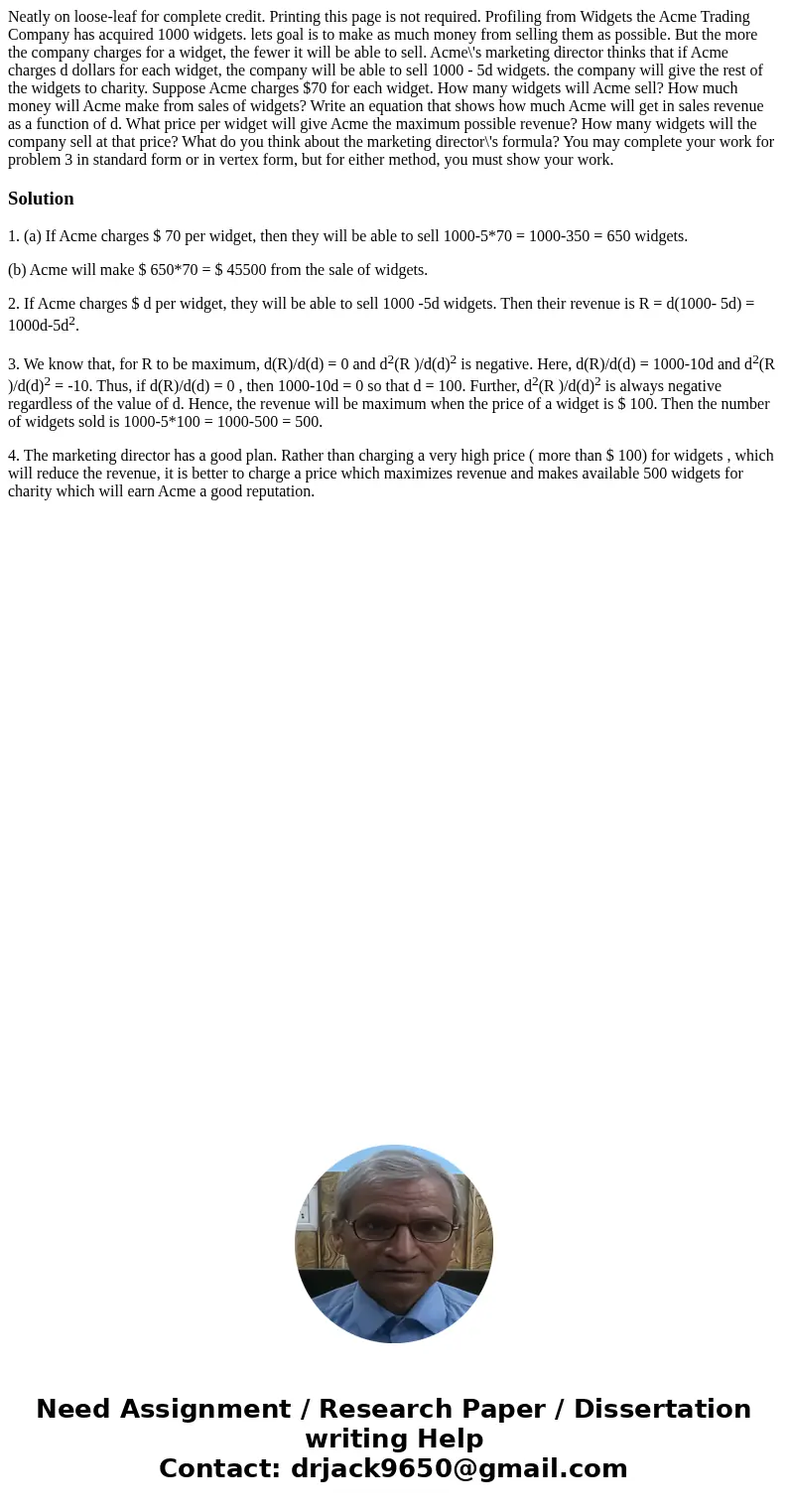Neatly on looseleaf for complete credit Printing this page i
Solution
1. (a) If Acme charges $ 70 per widget, then they will be able to sell 1000-5*70 = 1000-350 = 650 widgets.
(b) Acme will make $ 650*70 = $ 45500 from the sale of widgets.
2. If Acme charges $ d per widget, they will be able to sell 1000 -5d widgets. Then their revenue is R = d(1000- 5d) = 1000d-5d2.
3. We know that, for R to be maximum, d(R)/d(d) = 0 and d2(R )/d(d)2 is negative. Here, d(R)/d(d) = 1000-10d and d2(R )/d(d)2 = -10. Thus, if d(R)/d(d) = 0 , then 1000-10d = 0 so that d = 100. Further, d2(R )/d(d)2 is always negative regardless of the value of d. Hence, the revenue will be maximum when the price of a widget is $ 100. Then the number of widgets sold is 1000-5*100 = 1000-500 = 500.
4. The marketing director has a good plan. Rather than charging a very high price ( more than $ 100) for widgets , which will reduce the revenue, it is better to charge a price which maximizes revenue and makes available 500 widgets for charity which will earn Acme a good reputation.

 Homework Sourse
Homework Sourse